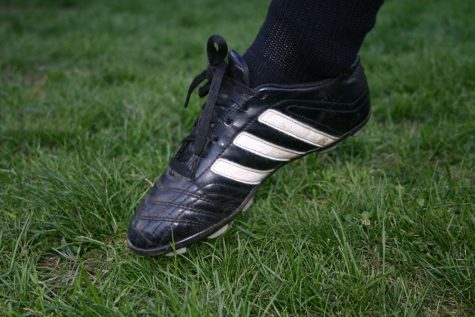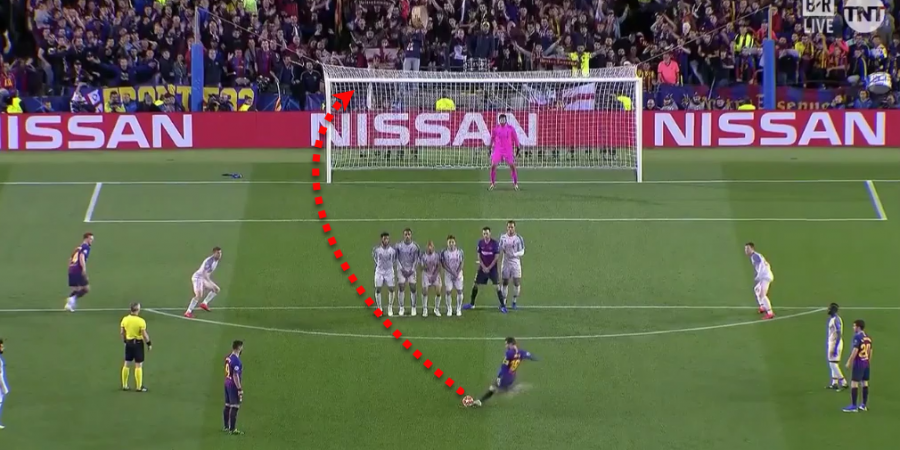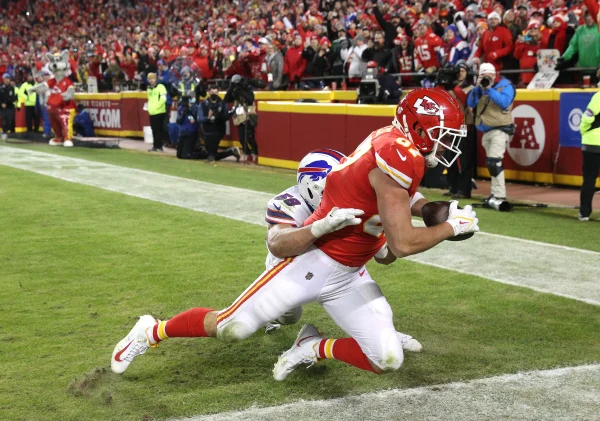How To do Free Kicks in Soccer Like THE PROS
Many people of all ages like to play soccer, but when it comes to actually kicking the ball to score a goal, that is where many people struggle. Let me start with a little story about myself. I started getting into playing soccer when I was 9 because when my family from Peru(a country in South America) but are living in Montreal, Canada now, came to visit, my uncle introduced soccer to me and encouraged me to start playing.
Since then I’ve been playing just for fun and learning a few tricks here and there and I went to two academies to learn some basics but I don’t recall them showing us how to kick the ball. Our instructor just taught us some drills to practice, but when it came to kicking the ball to the net, I noticed I didn’t know what I was doing. I looked up YouTube videos on how to kick a soccer ball but I just couldn’t get it right when I practiced, so I just tried to figure it out on my own.
That was a big mistake, because I injured myself from kicking the wrong way. So after a long period of trial and error, I went back to YouTube and found a video that was very specific and explained exactly how and what not to do. Then, knowing what to do, I realized that you must practice even if you don’t get it the first time, you will eventually get the hang of it, and before you know it, you will be scoring goals. In this article, I will explain all the steps of how to kick a soccer ball and with the gained knowledge I learned from a few soccer tutorials, an article, and from experience playing. Then, with practice you will be able to perform free kicks like the pros. Keep in mind that you don’t need strong legs to kick a soccer ball in general. In my opinion, technique is going to take you farther in learning how to kick the ball although having more strength can help hit the ball harder and further to an extent. Before we go over the steps, let me define what a free kick is in my own words. A free kick during a match would usually occur because a defender fouled a player close or right outside of the goalie box on the opposing team. Now the player that was fouled would have to either kick or pass ¨to¨ his players for them to either attempt to score a goal or score a header. The other option is, if they want to attempt to score from their position he can attempt to or he could ask another player to attempt to score. If you are playing with your friend at the park, and you just want to practice free kicks, that is basically just trying to score the ball by running up to it, like you see the players do it in t.v. Or you can practice just by playing by yourself and kicking the ball to a net or a wall.
**You can find out more about How to kick a soccer ball in the end of the article by tapping on the links of the soccer tutorials I used for research and in my opinion were the easiest to understand. Also check out the 8 minute video of ¨Incredible Free Kick Goals In Soccer 2021,¨ the video of the famous banana kick, and a video explaining the physics behind it.
Step 1: Positioning and Run Up To The Ball
Your run up to the ball is one of the most important steps to kicking the target you are aiming at. This is because if you kick the ball from any angle you will likely kick the ball in a direction contrary to what you intended. For example, if you are kicking with your righty and run up to the ball running straight, you might accidentally kick the ball to the left direction, completely missing your intended target. However, by adding angle, you are making sure exactly in which direction your foot is going to kick towards. Keep in mind that there isn’t one primary way to run up to the ball. Everyone has a different way of running up to the ball, so just do what is comfortable for you. What I would do when running or stepping up to the ball would be to take a considerable distance away from the ball to get enough power(with technique) on the ball. This can be about 2 large back steps away from the ball. When it comes to the angle in how you run up to the ball, for me I kick with both feet, and it can be the same angle for both feet but you may feel different and apply a slightly different angle on the ball(due to varying muscle memory in both of your feet, but the step process if still the same)when deciding which foot to kick with every time so if you are using your righty, go on a 45 degree slant across from the ball. Keep in mind that when you are taking a free kick, you may need to change your angle a bit because you may kick the ball out of bounds. It is something that will take time to learn and get used to knowing exactly in which angle to kick the ball from. This takes practice and will improve your muscle memory and coordination with the ball because you will know how to kick the ball from anywhere. I’m giving you a heads up, when you do start to kick the ball, you may not see the best results at first, but if you keep on practicing, your kick is going to get better. I will also go over how to kick the ball with power but also balancing it with technique and accuracy. Now that you know your position, you have to run up to the ball. If you’re using your right foot, I would start by taking two small steps or literary short strides as you approach or run up to the ball. You shouldn’t be sprinting or running fast at the ball but should take steps that are going to help take that cumulative momentum and use it to put some impact on the ball. I’m not sure if I ever noticed this whenever I kick the ball, but when you are running up,your strides have to get smaller as you get closer to the ball so you can kick with control and not just kick it anywhere. That force will help increase the speed and whatever spin you may add to the ball to make it flow more thoroughly in the air. PAY ATTENTION! This part of this step is going to affect the distance that the ball goes and if not used/done properly, then may end up in failure to kick the ball or even result in injury by stubbing your toe. Right before you make contact with the ball, you want to hop from your right foot to your left foot and then with your right foot, swing with your foot to make contact with the ball. All that momentum from your run up and in the last small hop from foot to foot will help you to follow through and kick the ball far. However, if you are kicking from a smaller distance, then this is where the practice will help to know how to balance power and technique in kicking the ball. The further you bring your kicking leg behind yourself up to swing your foot to kick the ball, the farther you will be able to kick. Another thing that will help to improve your accuracy of the shot is when you run your last stride, you should point your non-kicking foot to where you want to kick the ball.
Something to keep in mind: It helps when you take your last little stride that you slant your body to the side and a little to the back to help you to be stabilized when kicking the ball and to give the ball a better altitude and accuracy. Just be careful not to slant your body too much to the back or else the ball will have too much height or altitude. Also, when you kick the ball, you should not be looking completely up. It is ok to glance up to see your target and quickly look back at the ball to kick. Another tip is to relax your body. Don’t be overly focused on power, it is better to make sure you balance

power with technique and accuracy.
Step 2: Make contact with the ball
This step will help you to know the area in the ball you should kick with your foot. This will also be very important if you want to add some new techniques like learning how to kick curve balls and learn how to kick knuckle balls. Some famous soccer players that are known for using these techniques in matches, are Messi, who is my favorite soccer player, Ronaldo, former soccer player David Beckham, and Kevin De Bruyne. Also, by applying this step correctly in your practice, it will help prevent injury. So after your run up to the ball, you want to make sure that you are locking your ankle when you kick the ball. This is important because if you relax your foot, you are not going to give your kick enough strength to have enough altitude(or height). When you lock your ankle you should try to move your ankle all the way back until you can’t go any further. When I kick the ball, most of the time I don´t lock my ankle because the way I´ve been kicking the ball for the past 2 years is just leaving your ankle as it is, but since I practiced that habit for a period of time, I eventually was able to give the ball altitude whenever I did a free kick or just kicking the ball in general. The only time I lock my ankle is if I really want to kick the ball with power and kick the ball far. I guess I overlooked that important tip when I was watching one of the soccer tutorials then. Just around two months ago I discovered that you should lock your ankle. So when I practiced that, I saw right away that I was able to kick the ball further and that made a big difference in how far I was able to kick. I don’t apply that tip when I am moving with the ball, but I only use it when I´m doing a free kick. I´m not saying you shouldn´t lock your ankle but also it shows that kicking the ball involves more technique. If you want to just kick the ball really hard, you might kick it completely into a different direction. However, if you kick the ball at your normal pace, you will have more accuracy. It is logical to think that if you want to start adding more speed and strength in your kicking, that you should gradually add more strength with accuracy the best you can in your shots instead of just blasting the ball. One practical way you can practice your kicking is by kicking the ball against a wall, like a handball wall. This is a good way to practice because you don’t always have to be running after the ball if you’re playing by yourself, the ball would just come back to you.

Some people say you should kick the ball with the laces area of your shoe, so that way you wouldn’t hurt your toes. Along with using your laces you also should contact the ball by using the top inside area of your shoe. If in one situation you are in a tight spot and a defender is keeping up with you and you want to go for a kick, you can use just your laces part of your shoe because if you kick with your side the defender has a better chance of blocking the ball because it takes more time to make sure you are in a good position to kick with the inside of your foot. If you want to just use your laces to kick the ball in general, that’s ok. I would only kick with my laces if I were to try to put power and speed on the ball. I would kick a little more with the inside of my shoe AND and some of the laces to curve or do a knuckleball or whatever technique you want to perform. One way you can practice these scenarios on your own is to try to pretend a defender is on you and you attempt to kick the ball to the goal. Now, what part of the ball should you kick? For me, for the time that I’ve been practicing, I have my own little way of kicking the ball. Most soccer tutorials suggest that you kick slightly under the middle of the ball(height wise and depending on the situation sideways also but mostly the middle). I don’t think about it much but I noticed I don’t really follow that suggestion, I usually just kick the ball where it feels comfortable. That is the general way of contacting the ball, however, if you want to add technique like a curve or a knuckle, or even the banana kick which is very well known from former soccer player Roberto Carlos, the way you make contact with the ball is different. Now for your follow through.
Step 3: The follow through
This step will help you to follow through with your kick and increase the altitude of the shot. When you make contact with the ball and want to kick the ball with altitude and the expected power you gained from the momentum, you have to make sure that when the ball is hit, that you don’t stop when the foot hits the ball. You should move your foot through the ball as it leaves your foot. By following this step, you know that your leg’s momentum, if fully used on the ball, will help the ball to get up to its highest point in direction to the goal. Then, your body will want to naturally land in a comfortable position. Some people after kicking the ball just keep their non kicking leg stabilized without jumping on to their other foot. I usually hop on to my other foot naturally. Everyone has a different way of naturally landing or settling back into a normal position after kicking the ball, so whichever way is ok.
Other than that, that is just about the basics that you should know when learning how to kick the soccer ball the correct way. I hope that you can take something from this article and apply it to your practice! Happy scoring goals!
Sources:
How to curve the ball | Learn bending free kick
How to shoot a knuckleball | Learn CR7 free kick
Incredible Free Kick Goals In Football 2021
https://www.youtube.com/watch?v=wRbM2ls4Hw0
https://www.youtube.com/watch?v=m57cimnJ7fc
https://www.wikihow.com/Kick-a-Soccer-Ball-Hard
https://www.google.com/amp/s/www.wikihow.com/Kick-a-Soccer-B







